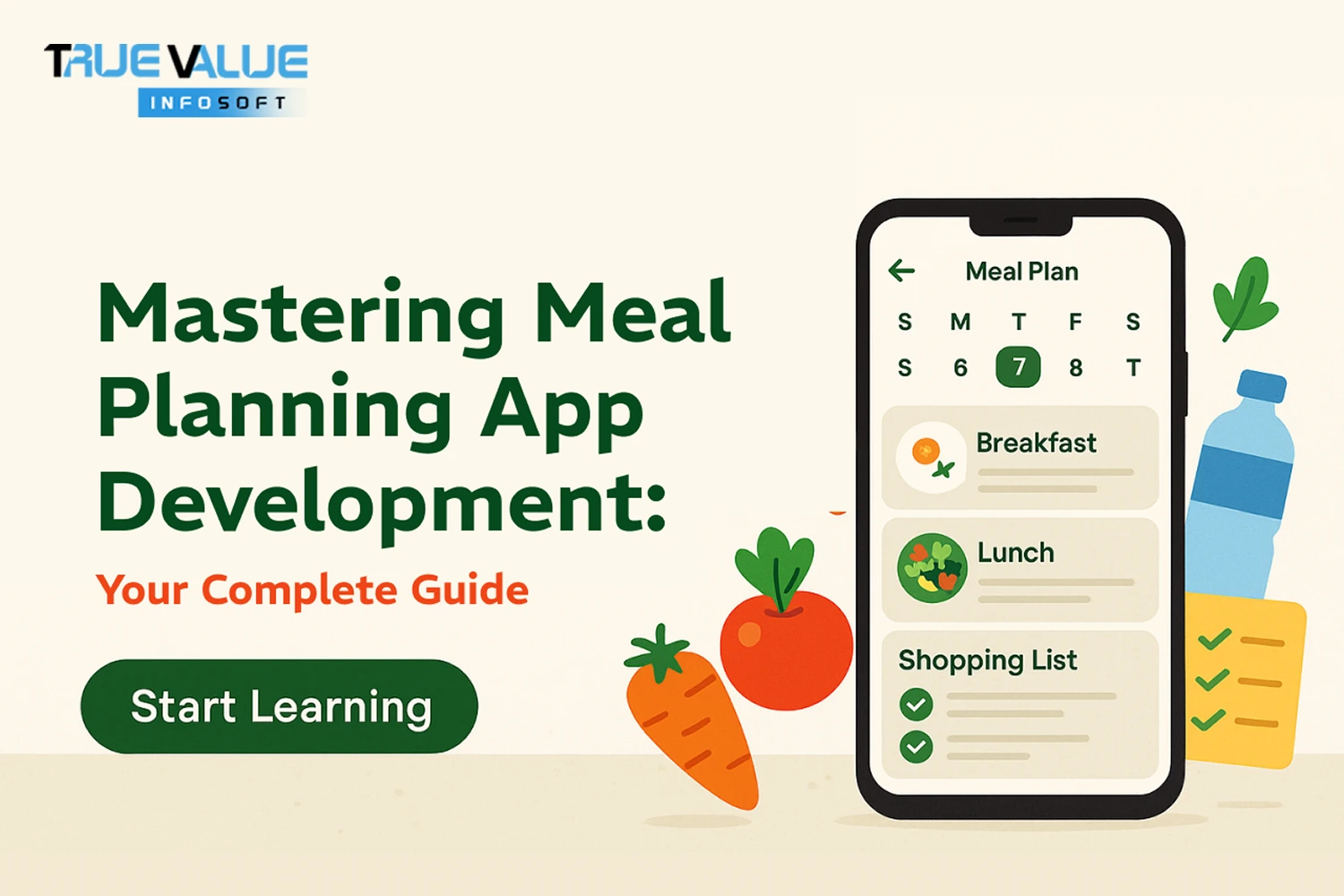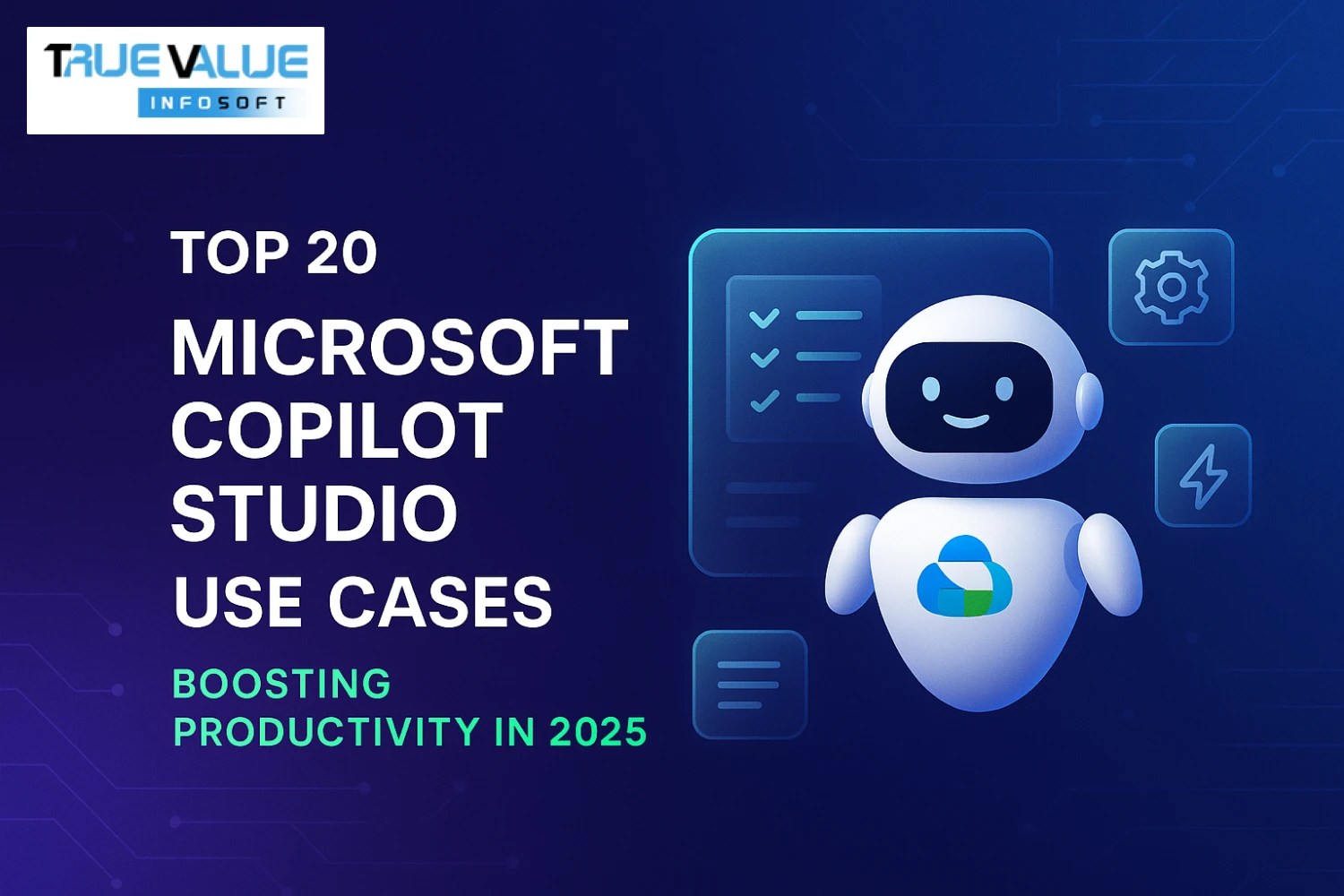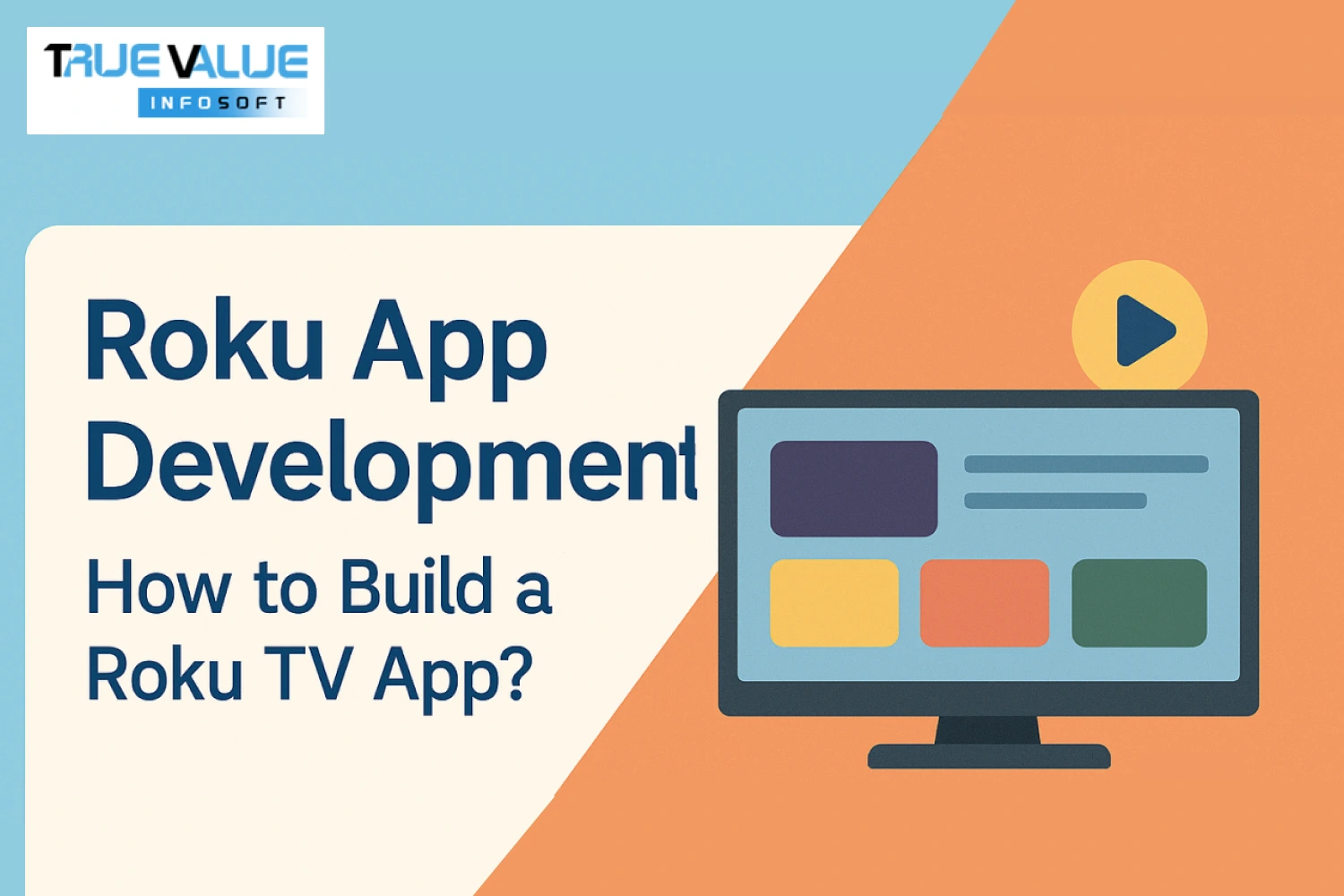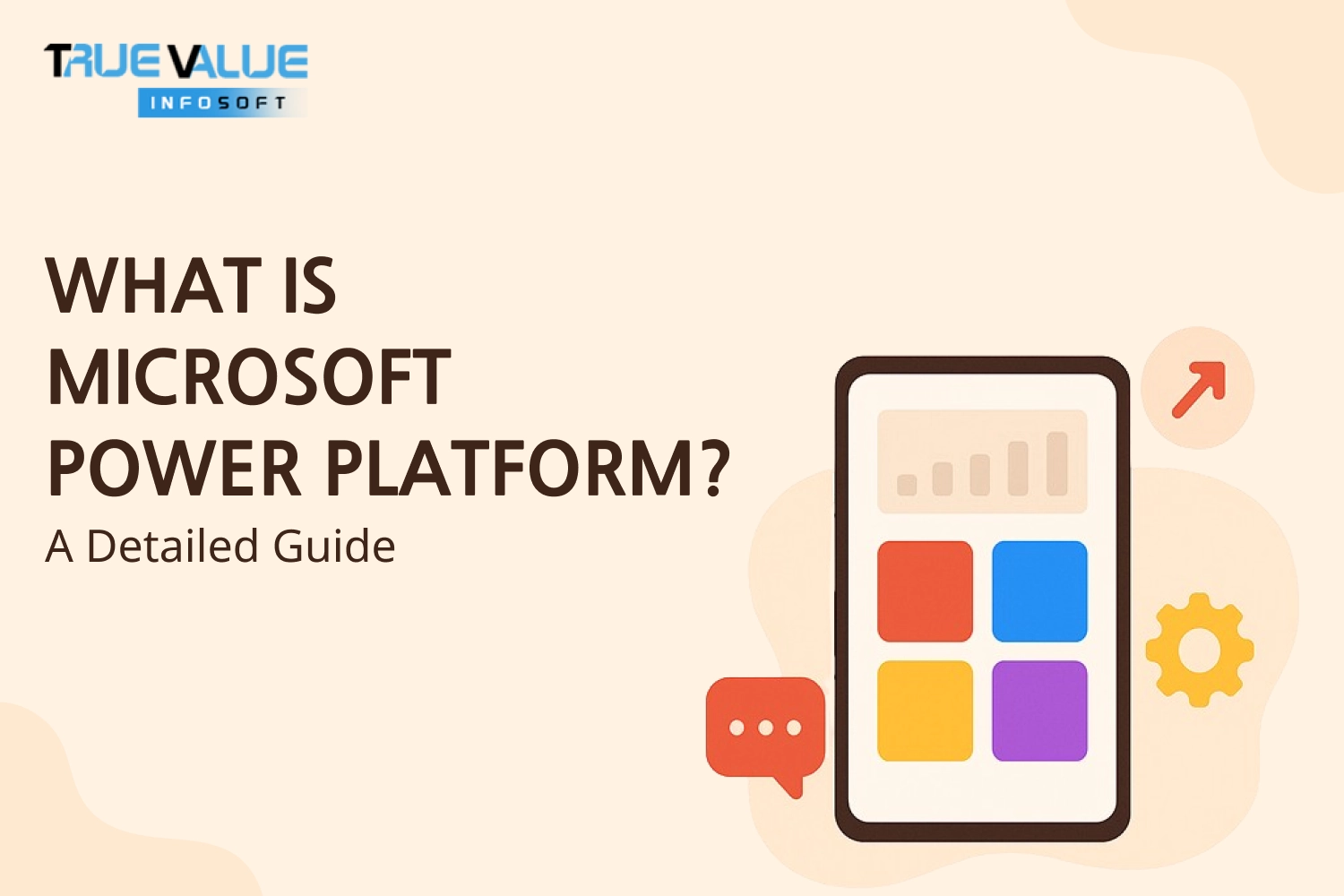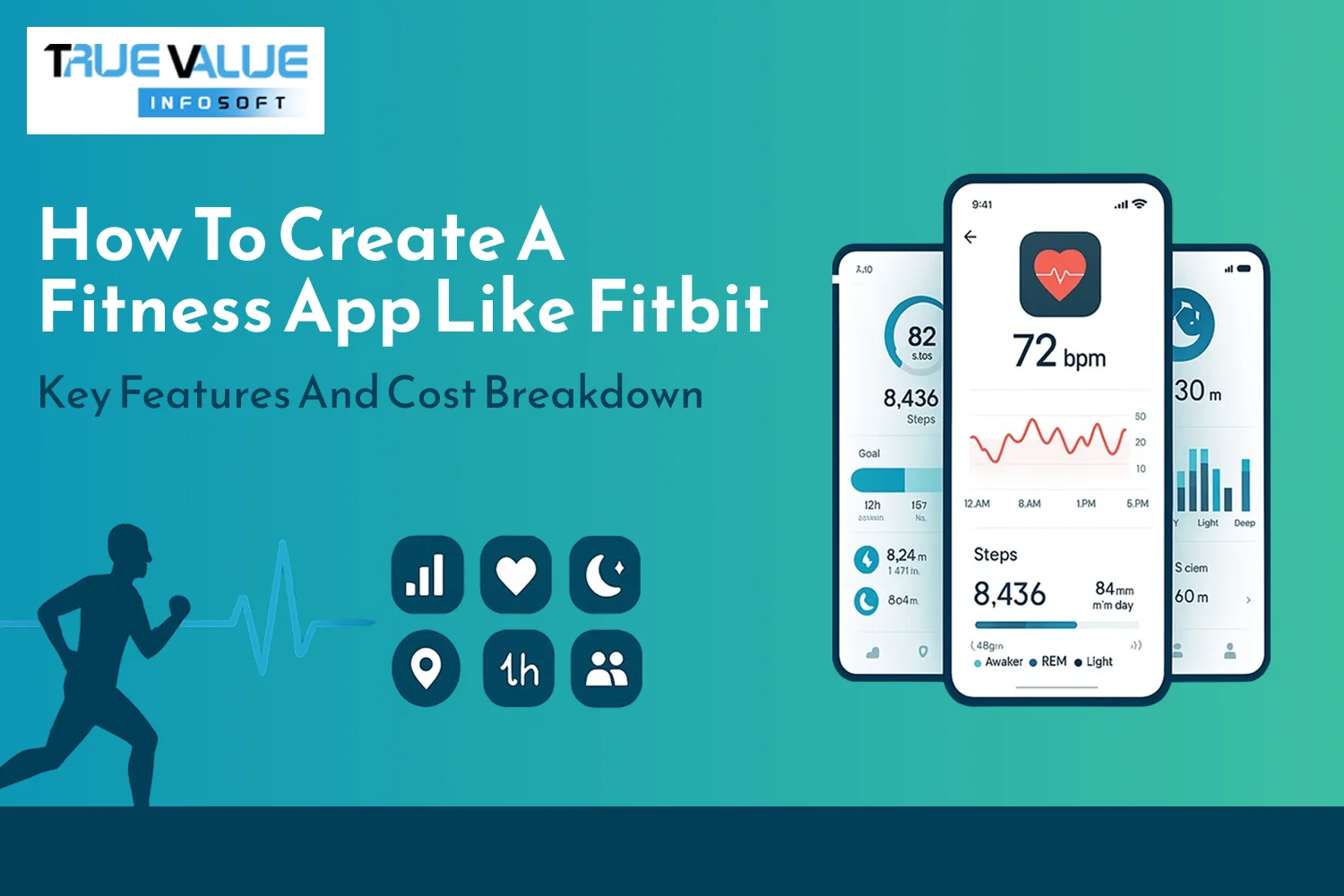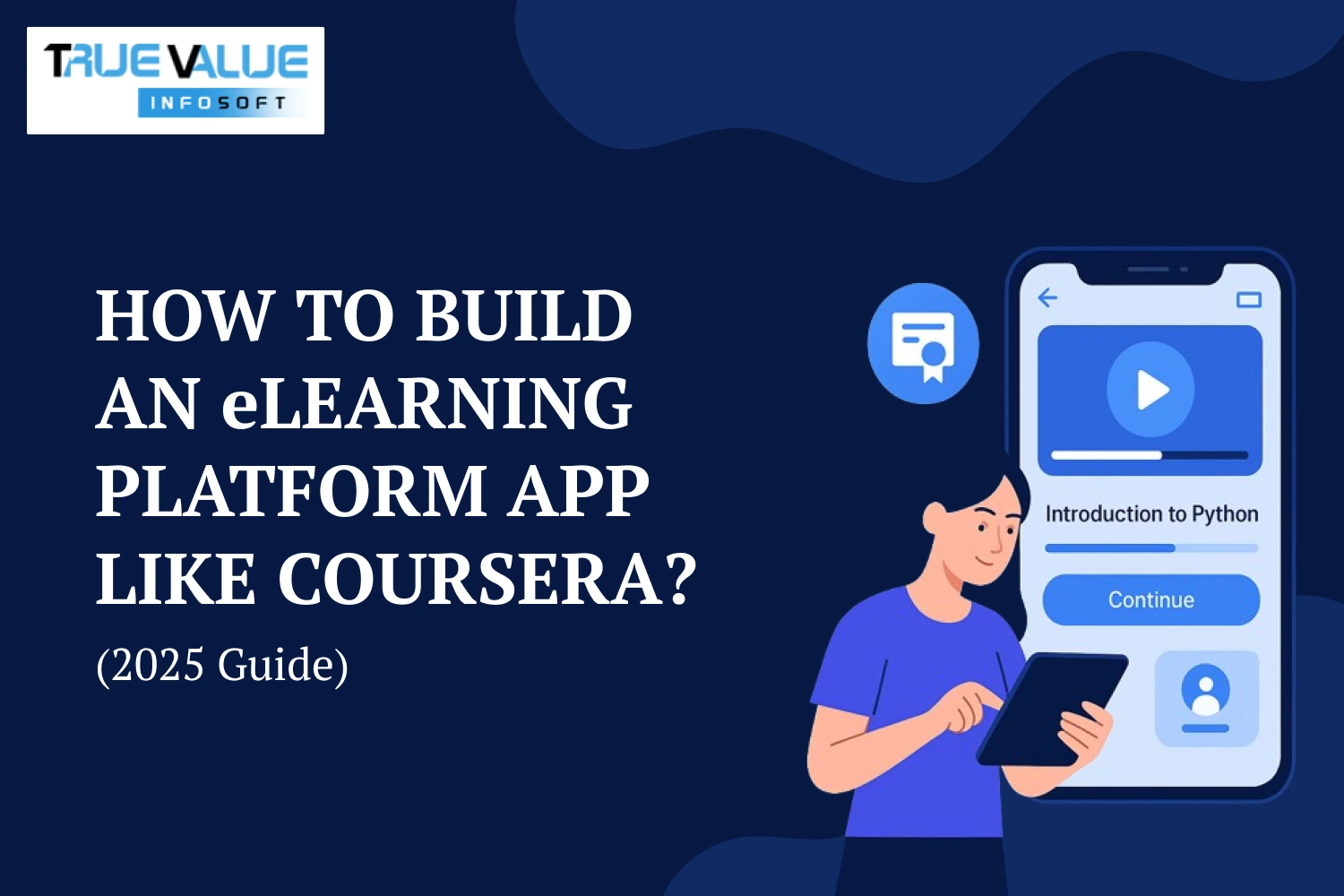Introduction
Are you looking to revolutionize the way people plan their meals and eat healthier? In today’s fast-paced digital age, the demand for meal planning apps is skyrocketing as users strive for convenience, health, and sustainability. With increasing awareness around fitness, dietary preferences, and time-saving habits, meal planning apps are becoming essential tools for modern living.
True Value Infosoft, mobile app development company in India, brings you this comprehensive guide to mastering meal planning app development. Whether you are a startup looking to create the next big health app or a business aiming to expand into the nutrition tech space, this guide will equip you with everything you need to know—from essential features and design considerations to development processes and cost breakdowns.
Our team at True Value Infosoft has helped numerous clients successfully launch food and nutrition-based applications that not only rank well in app stores but also create real value for their users. In this guide, we cover every aspect of meal planning app development to ensure your product is robust, user-friendly, and market-ready.
Let’s dive deep into the world of meal planning apps and explore how you can turn your app idea into a successful reality.
Understanding the Meal Planning App Market
1 Market Trends and Growth
Meal planning and healthy eating are no longer niche trends. With rising awareness around fitness and wellness, more users are looking for digital solutions to track their food habits. According to recent studies, the global health and wellness app market is expected to surpass $200 billion by 2030, with meal planning apps being a significant contributor.
2 Target Audience
Identify who you're building the app for. Common user segments include:
- Busy professionals
- Fitness enthusiasts
- Families
- Individuals with dietary restrictions (vegan, keto, gluten-free)
- Meal preppers
3 Competitor Analysis
Analyzing existing apps like Yummly, Mealime, and Eat This Much can give you insights into what works and what doesn’t. Key areas to explore include:
- Core features
- User interface
- Monetization models
- User reviews
Defining Your App's Purpose and Features
1 Core Goals
What will your app solve? Examples:
- Simplifying meal prep
- Customizing diet plans
- Automating grocery lists
- Reducing food waste
2 Must-Have Features
- User profiles and dietary preferences
- Recipe suggestions
- Nutritional information
- Grocery list integration
- Calendar and scheduling
- Push notifications
- Barcode scanning for ingredients
3 Advanced Features
- AI-based meal recommendations
- Voice assistant integration
- Integration with fitness trackers
- Community sharing of meal plans
- Smart pantry management
UI/UX Design for Meal Planning Apps
1 Importance of Intuitive Design
A sleek, user-friendly interface enhances usability and retention. Make the design visually appealing but simple to navigate.
2 Key Design Elements
- Onboarding screens
- Recipe cards with images
- Color-coded meal calendar
- Swipe gestures for meal selection
3 Accessibility and Inclusivity
Ensure that your app is usable for people with disabilities. Use readable fonts, high-contrast colors, and voice-over capabilities.
Choosing the Right Tech Stack
1 Front-End Technologies
- React Native or Flutter for cross-platform development
- Swift (iOS) or Kotlin (Android) for native apps
2 Back-End Technologies
- Node.js, Python (Django/Flask)
- Firebase or AWS for cloud services
3 APIs and Integrations
- Nutritionix or Edamam for nutrition data
- Google Fit or Apple HealthKit for health tracking
- Stripe or PayPal for payment integration
The Development Process
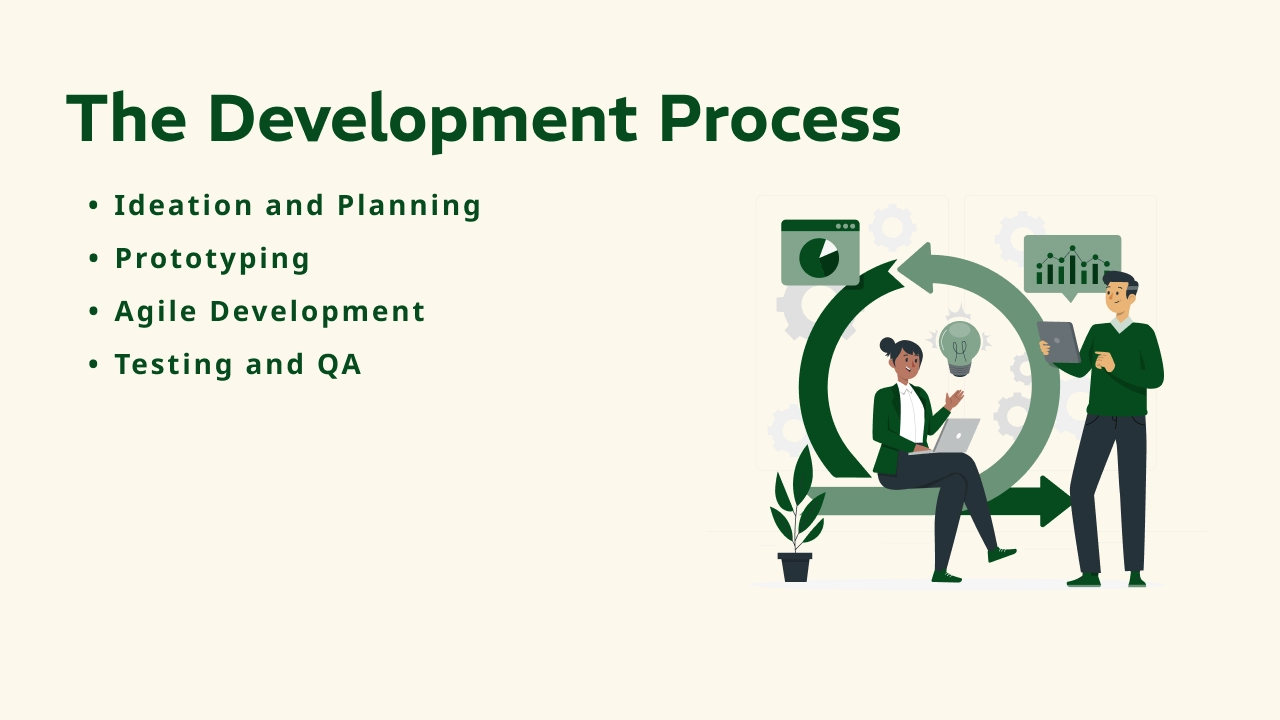
1 Ideation and Planning
- Define your goals and feature set
- Sketch wireframes
- Create a product roadmap
2 Prototyping
- Develop interactive mockups
- Gather feedback through user testing
3 Agile Development
- Sprint-based development
- Regular testing and bug fixes
- Continuous integration and deployment
4 Testing and QA
- Unit testing
- Beta testing
- Usability testing
Backend Infrastructure and Data Management
1 Database Management
Choose the right database:
- SQL for structured data (e.g., PostgreSQL)
- NoSQL for flexibility (e.g., MongoDB)
2 Data Privacy and Compliance
- GDPR and HIPAA compliance
- Secure data storage and transmission
3 Cloud Services
- AWS, Azure, or Google Cloud for scalability
- Use of serverless architecture for cost-efficiency
Integrating AI and Machine Learning
1 Personalized Meal Recommendations
AI can analyze user behavior, preferences, and dietary goals to suggest meals.
2 Image Recognition
Allow users to snap a picture of ingredients and get recipe suggestions.
3 Predictive Grocery List
AI can predict what you’ll need based on past habits and inventory levels.
Monetization Strategies
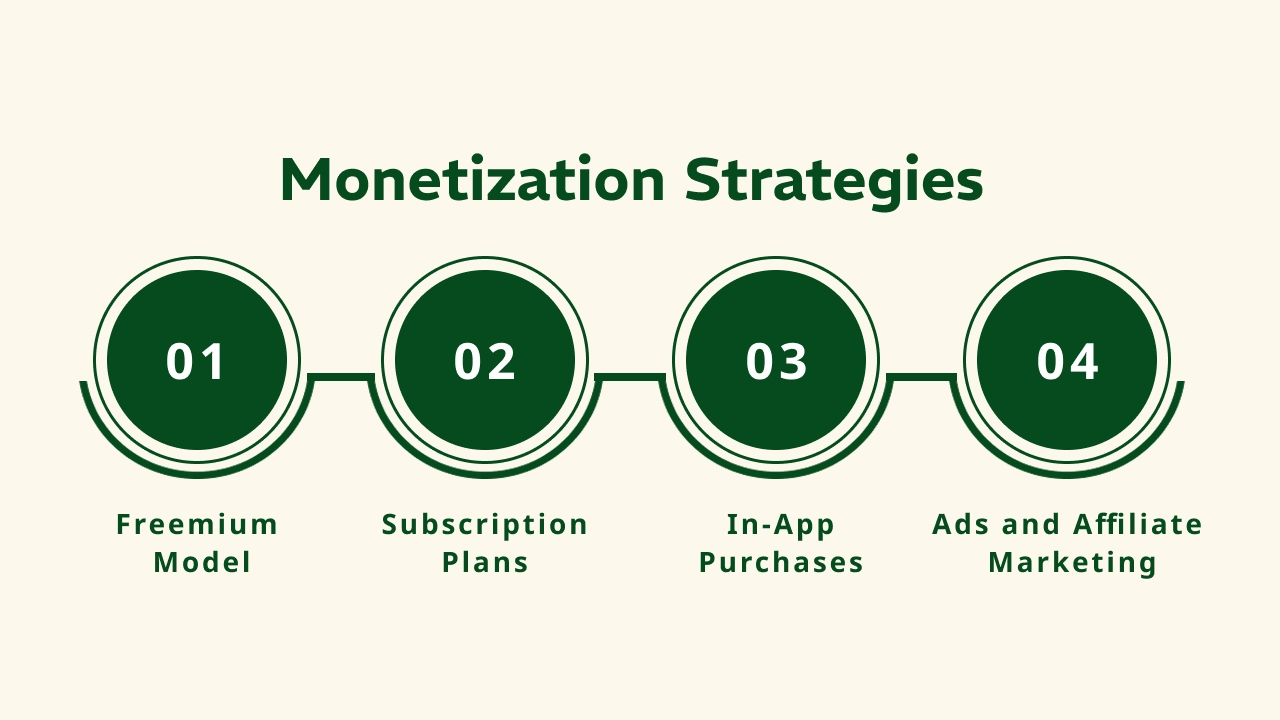
1 Freemium Model
Basic features for free, advanced features for a fee.
2 Subscription Plans
Monthly or yearly plans for premium access.
3 In-App Purchases
Offer additional recipe packs, personalized plans, or grocery delivery integration.
4 Ads and Affiliate Marketing
Partner with food brands or kitchenware companies for revenue.
Launching Your App

1 Pre-Launch Checklist
- Final testing
- Marketing collateral
- App Store Optimization (ASO)
2 Soft Launch
- Release to a limited audience
- Gather feedback and make adjustments
3 Full Launch
- Press releases
- Influencer collaborations
- Paid advertising campaigns
Post-Launch Support and Maintenance
1 User Feedback
Use reviews and analytics to guide updates.
2 Bug Fixes and Updates
Regularly update the app for security, performance, and new features.
3 Scaling the App
- Add new features
- Expand to new markets
- Integrate with more services
Measuring Success and Analytics
1 Key Performance Indicators (KPIs)
- Daily Active Users (DAU)
- Retention rate
- Conversion rate (free to paid)
- Churn rate
2 Analytics Tools
- Google Analytics
- Mixpanel
- Firebase Analytics
3 A/B Testing
- Test different versions of features to see what performs better.
Common Challenges and How to Overcome Them
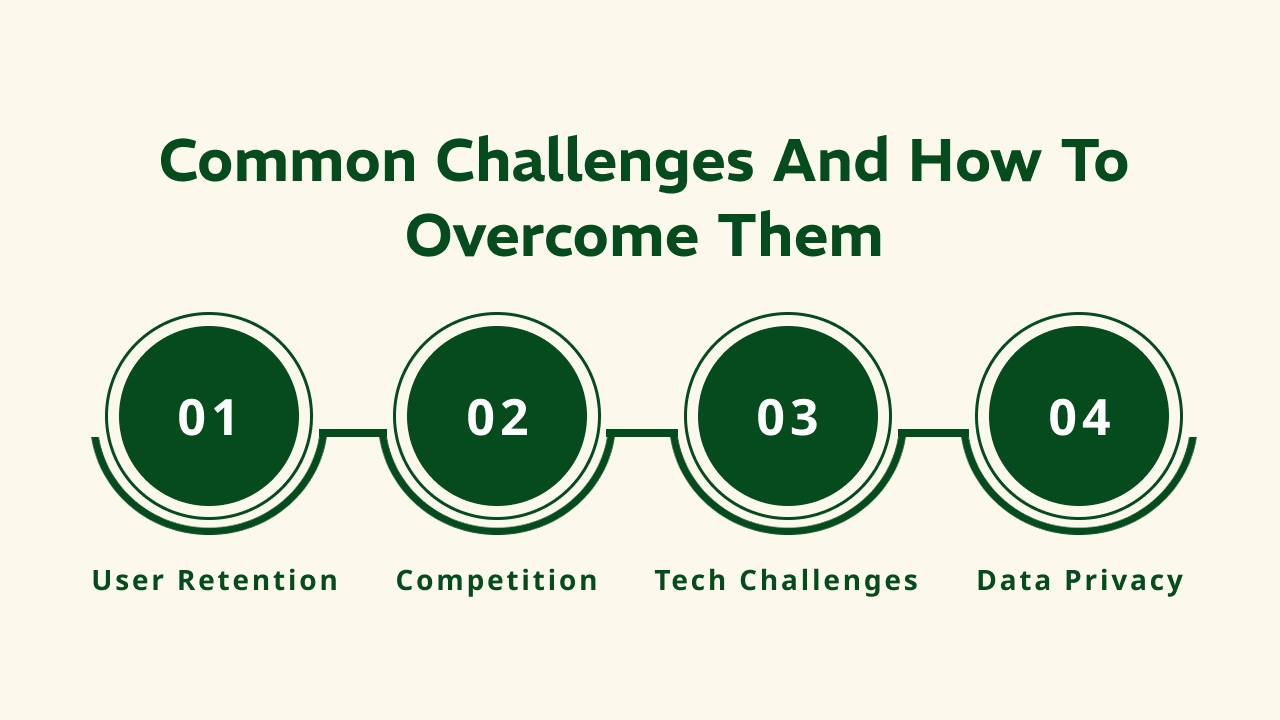
1 User Retention
- Push notifications
- Gamification elements
- Regular content updates
2 Competition
- Unique selling propositions (USP)
- Target niche audiences
3 Tech Challenges
- Hire experienced developers
- Use reliable third-party APIs
4 Data Privacy
- Stay updated with regulations
- Transparent privacy policies
Future Trends in Meal Planning Apps
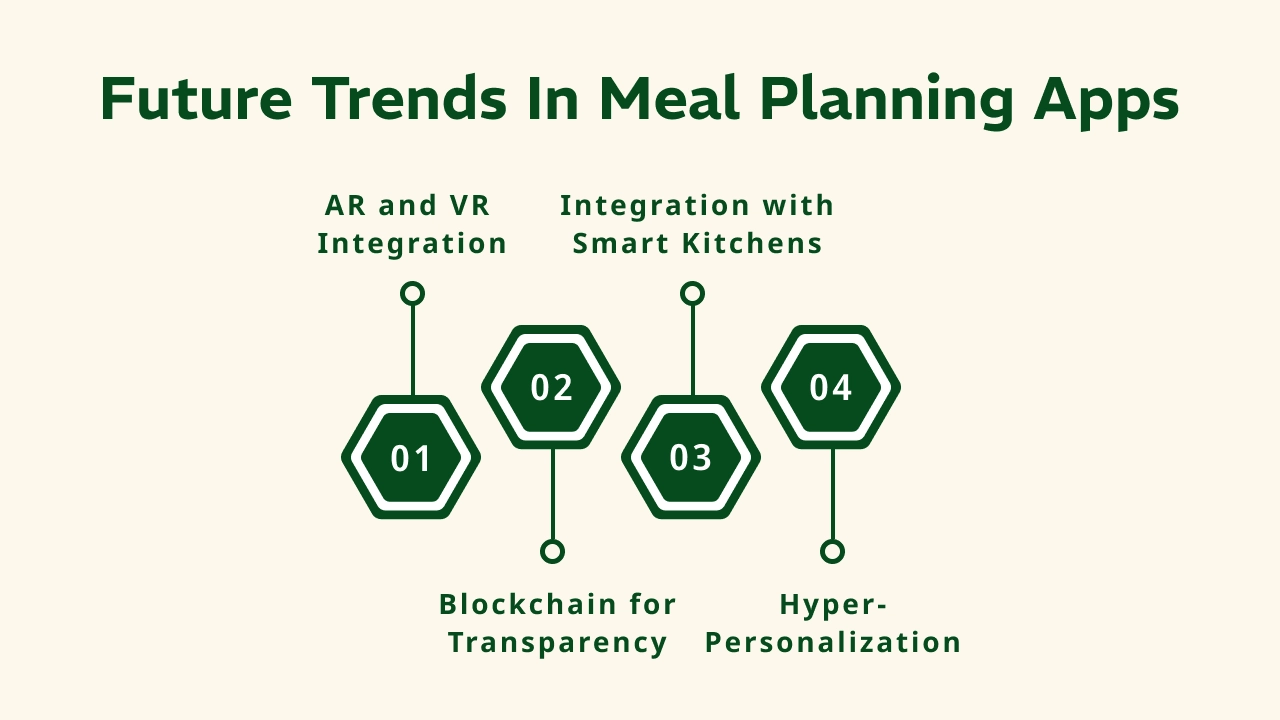
1 AR and VR Integration
Visualize meals and prep instructions in augmented reality.
2 Blockchain for Transparency
Use blockchain to ensure ingredient sourcing transparency.
3 Integration with Smart Kitchens
Sync with IoT devices like smart ovens and fridges.
4 Hyper-Personalization
Use AI to create ultra-specific meal plans based on DNA, mood, and microbiome.
Conclusion
Developing a meal planning app is not just about creating a digital tool—it’s about building a platform that influences people’s lives for the better. With health and convenience becoming top priorities for consumers, investing in a meal planning app in 2025 is a smart and strategic move.
From understanding the market landscape to implementing cutting-edge features like AI-based meal recommendations, this guide has walked you through every step of meal planning app development. When it comes to choosing a development partner who can turn your vision into reality, True Value Infosoft stands out as the best app development company in India.
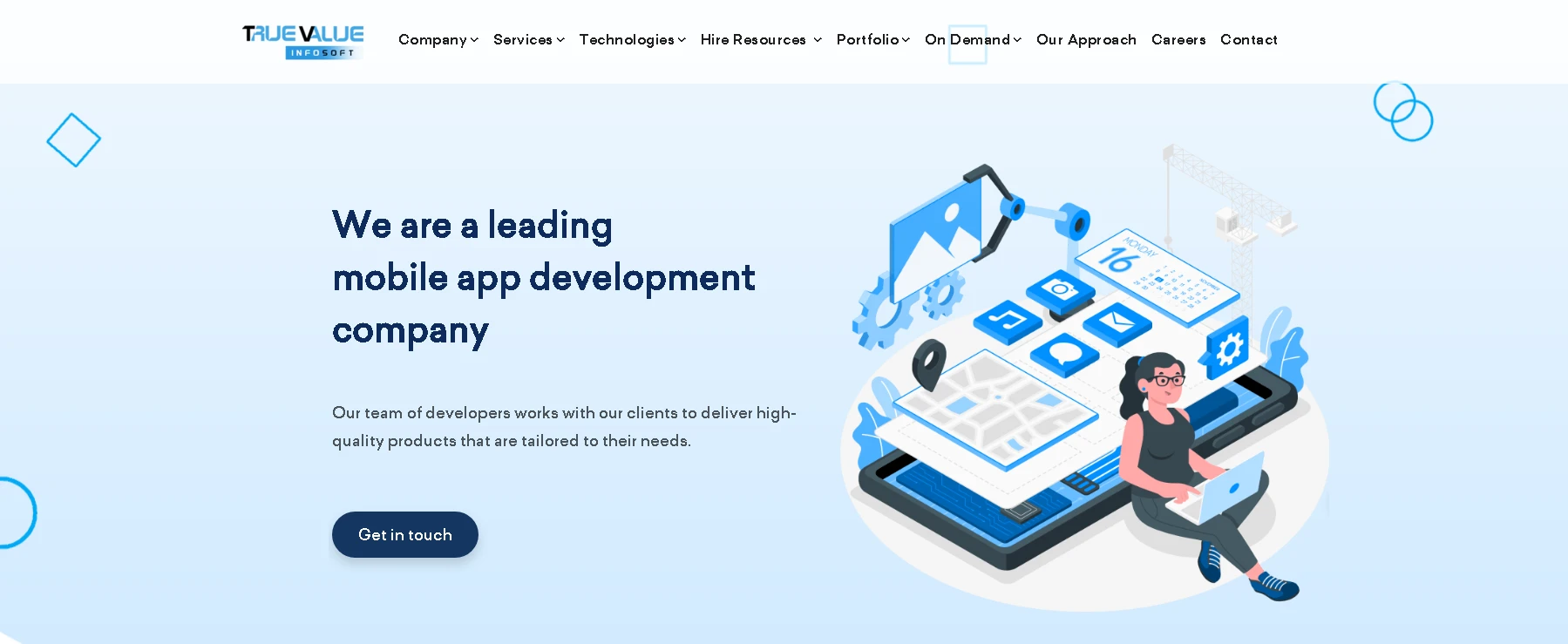
We bring innovation, technical expertise, and a user-first approach to every project. If you’re ready to start your meal planning app development journey, connect with our experts at True Value Infosoft today and take the first step toward creating an impactful, high-performing app.
FAQs
The cost can range from $15,000 to $100,000 depending on features, platform, design complexity, and development hours.
Typically, 4 to 8 months depending on scope, integrations, and team size.
AI-driven meal suggestions, integration with fitness trackers, personalized nutrition plans, voice input, and grocery delivery features.
Yes, through subscriptions, in-app purchases, ad revenue, and affiliate marketing partnerships.
We are India’s top app development company with a proven track record, expert developers, and a deep understanding of health tech solutions.
